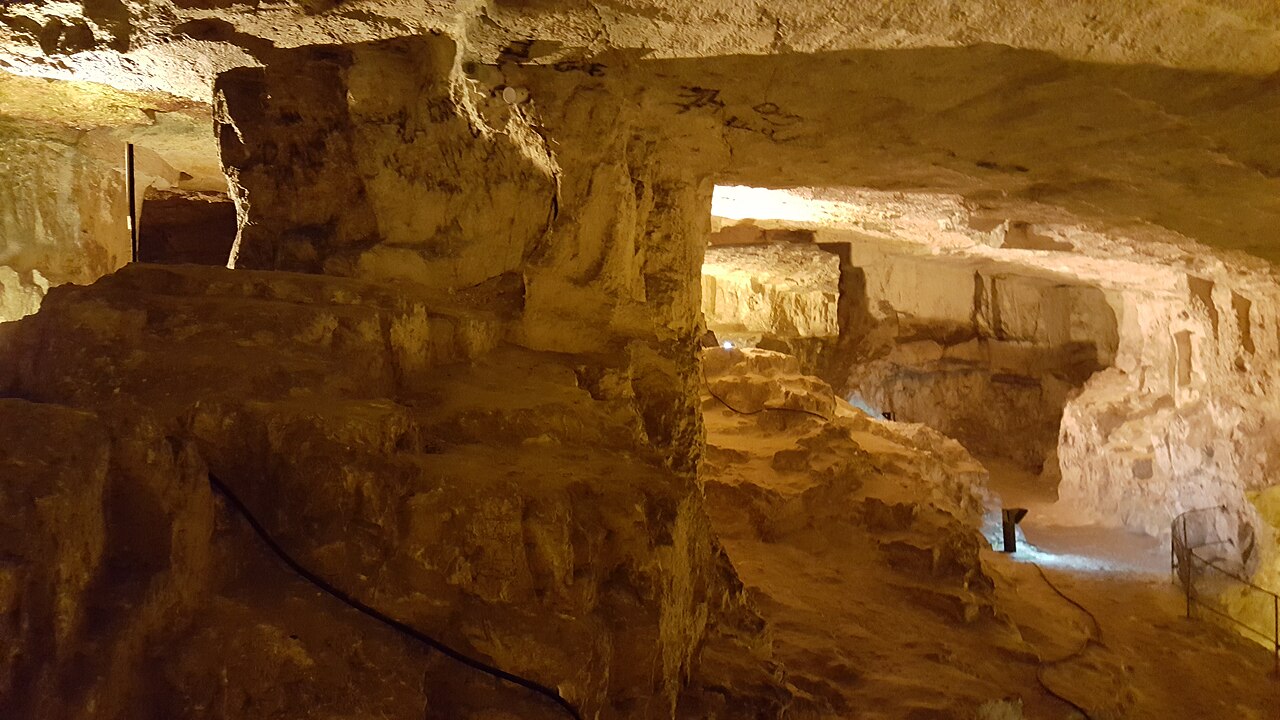
when Horror Yearbook – Jerusalem offers more than just historical monuments and religious landmarks. Beneath its ancient streets lies a shadowy world few have explored. Zedekiah’s Cave, also known as Solomon’s Quarries, stretches 750 feet under the Muslim Quarter of the Old City. This subterranean marvel is filled with legends of kings and mysteries. The air feels thick with history and stone dust. Dimly lit pathways wind through carved limestone chambers, whispering tales of empires and escapes. Tourists who enter are often struck by the eerie silence. The cave is both a geological wonder and a cultural treasure that few fully understand. Its walls have absorbed centuries of secrets. For those willing to step underground, Jerusalem reveals a darker, hidden side of its past that textbooks never mention. This cavern is more than an archaeological site. It is a portal into legends that continue to spark curiosity around the world.
Two competing legends give Zedekiah’s Cave its mythical status. The first ties it to King Zedekiah, who supposedly used the cave to flee Jerusalem during the Babylonian siege around 587 BCE. This tale claims the cave once extended all the way to Jericho, allowing the king a secret route. The escape ended in tragedy when the Babylonians caught him and took his sight. Today, the sound of dripping water in the cave is called Zedekiah’s Tears. The second legend connects the cave to King Solomon. It is said that Solomon used the quarry to extract stone for building the First Temple. Though unverified by archaeologists, these stories link Jerusalem to both royalty and divine architecture. These tales give the cave a spiritual and historical depth that few other sites possess. Through myth or memory, the cave remains a powerful symbol within the narrative of ancient Jerusalem.
“Read about: Meet God’s Influencer: Carlo Acutis Just Became the First Millennial Saint”
While legends fuel the imagination, visible evidence within the cave provides practical insights. Chisel marks still line the walls, offering proof that it served as an active limestone quarry. Many experts believe this quarry helped supply stone for King Herod’s monumental building projects, including the expansion of the Second Temple. Given the quality of limestone found in the cave, the material was likely used in key constructions across Jerusalem. The Western Wall, one of the most sacred sites in Judaism, might have been built with stones cut from this very quarry. While no inscriptions confirm this link directly, the style and tool markings make it a strong possibility. Walking through the cave today, one can almost hear the rhythm of ancient hammers. Workers carved massive blocks in near-total darkness, contributing to some of the most iconic structures in Jerusalem’s history.
“Read more: Deadly Revolution: 19 Killed as Gen Z Rises Against Corruption and Censorship in Nepal”
Unlike many other archaeological landmarks in Jerusalem, Zedekiah’s Cave remains mostly untouched by large crowds or modern reconstructions. Its raw, cavernous atmosphere lends a different type of authenticity. Visitors descend into silence broken only by the occasional drip of water. The cave’s isolation enhances its mystique. While some parts have been fitted with soft lighting, much of the interior still clings to darkness. The ambiance transports explorers into another era. The passageways are uneven and rugged, making the journey feel more like an adventure than a standard tour. Few guides speak during the descent, letting the setting tell its own story. A feeling of reverence often overtakes visitors. It becomes easy to understand why so many legends surround the cave. In this underground space, time seems suspended, and Jerusalem’s ancient spirit feels very much alive.
Efforts have been made to maintain Zedekiah’s Cave in its near-original form. Authorities have ensured the structural safety of the passages without altering the historical layout. Despite the absence of direct archaeological evidence supporting the legends, the site is treated with respect. Events are occasionally held in the main cavern, including concerts and ceremonies, adding a modern layer to its ancient core. Scholars continue to research the cave’s origins and connections to historical events. Meanwhile, local tour operators emphasize its legendary aspects, blending history with folklore. The balance between preservation and public access remains delicate. Too much interference could disrupt the cave’s primal allure. By maintaining its raw character, the cave continues to captivate the imagination. Visitors leave with questions as much as answers. And in Jerusalem, where history and myth often walk side by side, Zedekiah’s Cave remains a place where stories still echo off the stone walls.